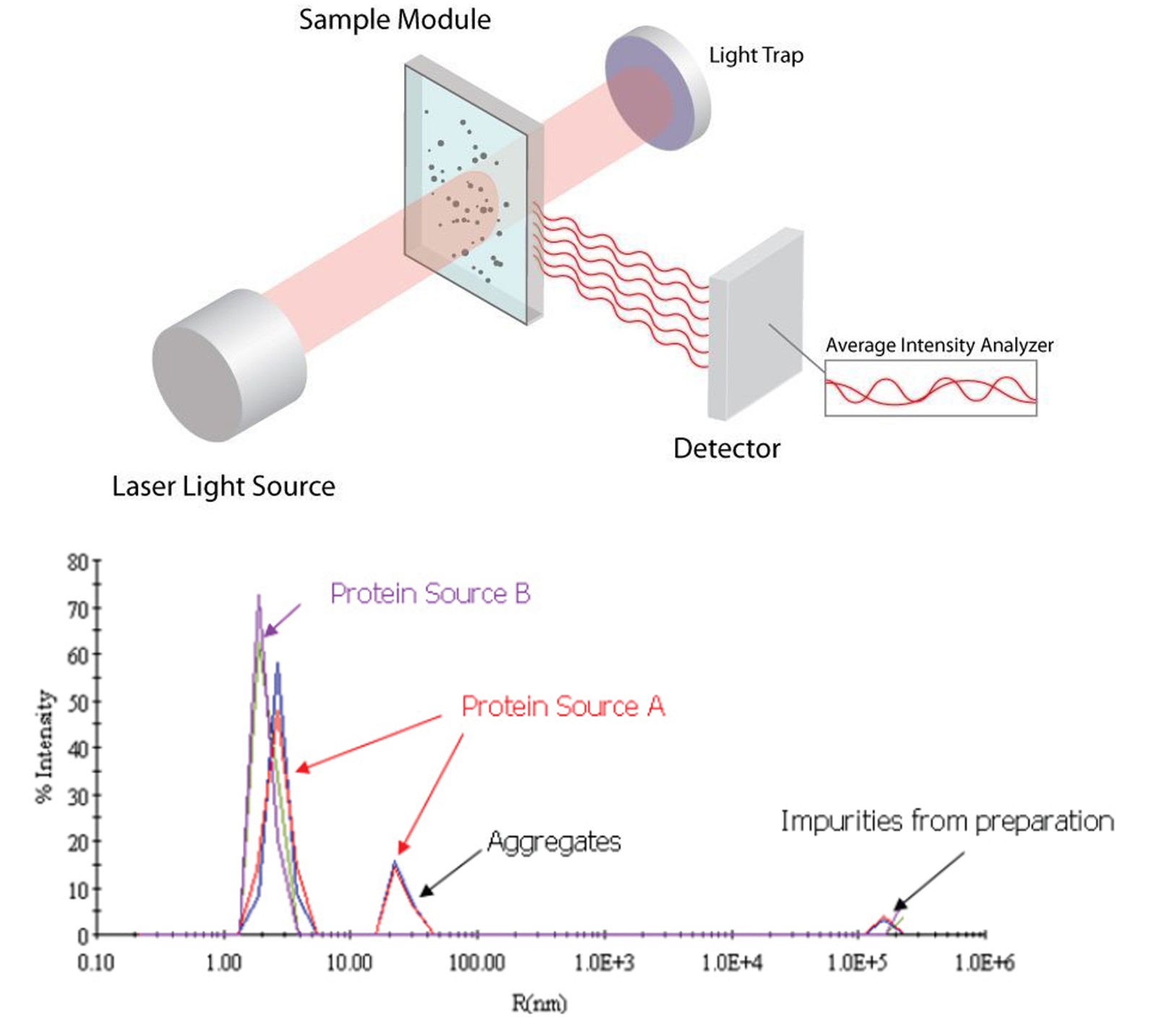Assessing the developability of drug candidates in the early stage of drug development is important to reduce the risk of costly downstream failure. Dynamic light scattering (DLS), also known as photon correlation spectroscopy, has become one of the main techniques for evaluating the aggregation, stability, and viscosity of therapeutic proteins, monoclonal antibodies, peptide drugs, and other biopharmaceuticals due to its ability to measure the size distribution of macromolecules and nanoparticles. Moreover, this technique can also be utilized to identify promiscuous inhibitors from hit compounds screened from small molecule compound libraries.
Creative Biostructure has advanced DLS equipment that can provide fully automated DLS services to complete some high-throughput screening programs. In the fully automated, microplate reader format, DLS constitutes a high-throughput biophysical screening approach for early assessment of the developability and formulation conditions of candidates. Compared with the traditional cuvette-based DLS, high-throughput (HT)-DLS performed on microplates can usually provide 10-100 times measurements.
DLS measures the translational diffusion coefficients (Dt) of colloids and nanoparticles in solution by quantifying the dynamic fluctuations in scattered light. The particle size and size distributions are calculated from the diffusion coefficients according to the hydrodynamic radius (Rh) or the hydrodynamic diameter (dh). This non-invasive, non-perturbative technology can measure the size of very small particles (from less than 1 nanometer to several micrometers) at low sample concentrations. Due to the molecular weight dependence of particle scattering intensity, this technique is sensitive to the presence of aggregates, which makes DLS a particularly effective approach for assessing stability and aggregation. Furthermore, viscosity can be quantified with DLS using probe particles.
 Figure 1. The schematic of DLS technology.
Figure 1. The schematic of DLS technology.
Creative Biostructure has mastered a variety of popular biophysical approaches and techniques to provide a wealth of information for the screening, validation, characterization, and optimization of potential candidates in drug discovery programs. If you would like to know more, please feel free to contact us and our drug discovery specialist can provide professional consultation for you.
References

Easy access to products and services you need from our library via powerful searching tools